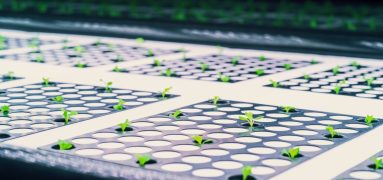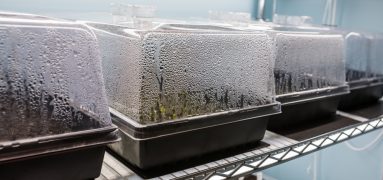Greenhouse Pest Control: Rodents

Everything growers should know about these unwanted furry guests
Rodents such as mice, voles, chipmunks, and rats are common greenhouse pests. Rodents are drawn to food, water, and warm shelter, so a greenhouse is the perfect place for them to move in. Additionally, many types of rodents don’t hibernate, so they’ll happily take up residence in a warm greenhouse during the winter. Not only are rodents annoying pests, but they pose risks to your crops and your health.
You should be concerned about rodents in your greenhouse because:
- They’ll destroy your crops. If rodents are eating your plants, they’re defeating the very purpose of your greenhouse. When they invade your growing space, they are eating your food and your profits.
- They can carry a number of dangerous diseases. Some rodents, especially rats, carry salmonella, E. coli, Lyme disease, and hantaviruses. Having them live among your crops will likely contaminate them, which is especially dangerous considering that most greenhouse crops are grown for human consumption.
- They reproduce rapidly. Rodents are notoriously fast at procreating, and they’ll happily do it within your greenhouse. If you have rodents now, you’ll have fifty times as many next year! Before you know it, your greenhouse will be overrun with them.
You can tell that there are rodents in your greenhouse if:
- You see them: What better proof is there than your own two eyes? If you see a rodent in your greenhouse, there's a 99% chance that there are more hiding somewhere.
- You see rodent droppings: You can use this handy chart to identify what kind of rodent the droppings came from.
- Your plants are being eaten: Like any good grower, you’re probably paying close attention to your plants. If you notice that your plants are being eaten, chewed on, or your seeds are disappearing, the unfortunate truth is that you have rodents eating them.
- You see tunnels and holes in the soil: Rodents will dig tunnels to get around. If you notice holes and mounds in the soil of your greenhouse, you have some furry tenants.
- You see bite marks on plastic, hoses, and/or wooden structures: Rodents will chew on just about anything. If you notice bite marks popping up on your equipment, it’s time to act against the perpetrators.
What to do about it:
- Rodent-proof your structure. Mice can fit through holes the size of a dime—any tiny crack or hole puts your operation at risk of invasion! Make sure that there are no holes, cracks, or other entry points for rodents to get in. You should also bury a barrier underneath the walls of the structure. That way, they can’t dig under the walls to gain entrance.
- Eliminate temptations:
- Eliminate trash, debris, and seeds that will attract their attention. This includes compost piles and animal feed. Rodents will quickly find anything that they can eat and will stick around as long as the food source lasts.
- Eliminate any place for them to shelter. Clean up any clutter where rodents can hide. This includes overgrown grasses and bushes, stacks of wood, piles of equipment, and anywhere else that might make a good hiding spot.
- Eliminate excess water pooling. Greenhouses require a lot of water to operate, and it’s inevitable that some puddles will form. However, rats love water as much as your plants do, so it’s a good idea to prevent as many as possible.
- Set traps. Once rodents make their home in a greenhouse, you can’t convince them to leave. The only way to get rid of them is by trapping them. There are many types of rodent traps that you can use.
- Last resort: Rodenticide. Chemical pest control should be a grower’s last resort because it poses health risks to your plants and the humans that work with them and consume them. There are many regulations set by the FDA and EPA on rodenticide use in agricultural settings, so you should call a professional pest control service to help you out.
We know that growers have a lot on their plate, including pest control. Why spend your time worrying about manually maintaining your greenhouse’s climate when you have so many other obligations? Let TC Control Group design and install the ultimate automated climate control system to help your operation thrive through thick and thin.



